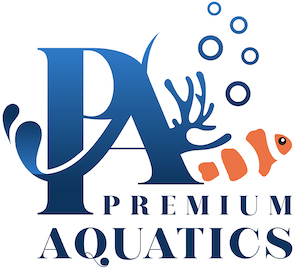SOON TO EXPIRE- HOWEVER IT IS A FREEZE DRIED ITEM SO IT WILL LAST LONGER AS LONG AS IT HAS NOT BEEN OPENED AND USED AS SOON AS IT HAS BEEN OPENED- SAVE 25%
Masstick is a blend of various highly technical, natural ingredients of marine origin used to provide balanced and natural feed for omnivorous fish and marine invertebrates.
• Masstick does not contain animal or vegetable compounds of land origin, or from sweet water, attractants, artificial preservatives or synthesis products.
• Masstick is a self-adhesive paste in powder formula, ready to use once it has been rehydrated.
• The rehydratable powder formula allows Masstick to be blended with any mollusc or crustacean pulp as well as eggs from fish, molluscs and crustaceans, artemia, mysids, copepods, rotifers and medicines that are administered orally.
• Once prepared and introduced into the aquarium, Masstick does not disperse into the water for hours, so it can be completely taken advantage of by fish and crustaceans. This feature allows the product to be used as “ad libitum” or rationed feeding.
• Because Masstick is comprised mainly of freeze-dried crustaceans, it does not contain fish skeletons and is thus very low in phosphates compared to its protein content.
Instructions
Add Masstick to osmosis water in a 1 to 0.5 ratio.
Example: Mix 14 g. of Masstick with 7 ml. of osmosis water. Knead in a small ziplock bag until a homogenous mixture is obtained.
Once the mixture is homogenous, Masstick may be used immediately or frozen for later use. If freezing Masstick, it should be used within five weeks after preparation.
Instructions for use:
Take a portion of Masstick and stick it on a rock, a branched coral skeleton, or the aquarium glass (preferably on the lower third), or depending on the food-obtaining habits of the animals in the aquarium.
Characteristics
Masstick is made with the freshest and highest quality ingredients. The blend consists mainly of shrimp (Palaemonetes varians) that we produce ourselves, harvested in the “Veta La Palma” Natural Space, and which are immediately freeze-dried to maintain optimum nutritional value. Freeze-dried microalgae and macroalgae are also added to the blend to satisfy the nutritional needs of a wide variety of marine fish.
Masstick provides an essential source of proteins, lipids rich in fatty acids EPA, ARA and DHA, vitamins and carbohydrates, from natural sources of marine origin.
The value chain is controlled and supervised by our technical and scientific personnel. This guarantees the highest quality product.
Dietary needs vary among carnivores, omnivores and herbivores, and also depend on the animal’s feeding habits at the surface, middle or in deep waters. It is difficult to find feed that meets all nutritional needs in the way each species prefers. With Masstick, we have met these unique requirements.
Masstick’s formula naturally attracts finicky fish, who begin eating it immediately or shortly after it is introduced in the aquarium.
Masstick is easy to use and comes in sealed bags with an oxygen and light barrier to preserve its freshness.
Nutritional profile:

Masstick’s nutritional profile has not been formulated to satisfy the needs of individual species, but to reduce deviations to a minimum and as such, it is an intermediate feed that satisfies the needs of the majority of aquarium species.
As shown in the table, Masstick has a very low humidity content for improved preservation of the product. Humidity content affects the chemical and physical properties of foods related to freshness and stability in terms of storage during long periods of time. Freeze-drying (lyophilisation) and sealed packaging reduces water content to a minimum.
Proteins are necessary for normal functions including enzymes, hormones and antibodies.
Protein is the most important part of the diets of fish and carnivorous coral. Protein content of Masstick is very high and completely of marine origin.
Proteins are large, complex molecules made up of various amino acids that are essential components in the structure and functioning of all living organisms. The first need regarding protein requirements of fish is to supply the indispensable amino acid requirement of the animal, and secondly to supply dispensable amino acids or sufficient amino nitrogen to enable their synthesis (Macartney, 1996).
Lipids are an important source of energy and fatty acids that are essential for the growth and survival of fish and corals. Although fish have low energy demand and are therefore susceptible to deposition of excessive lipid (Earle, 1995), lipids do have a role as carriers for fat-soluble vitamins and are important in the structure of biological membranes.
As such, Masstick does not contain a large amount of lipids, but is richer in long chain fatty acids like DHA, EPA and Arachidonic acid. Marine fish are incapable of biosynthesising DHA, either new or from shorter chain acids like linoleic acid (Sargent, 1997, 1996). Deficiencies in fatty acids can affect fish nutrition, depigmentation, skin, survival and reduce feeding efficiency.
Carbohydrates are not an essential part of the fish diet. However, if a small amount of carbohydrates is not provided in the diet, other nutrients like proteins and lipids are catabolised as energy to provide the intermediate metabolites for the synthesis of other biologically important compounds.
High content of carbohydrates is inappropriate in a fish diet and, as such, it is important to provide the optimum amount of carbohydrates. A balanced amount of carbohydrates is included in the Masstick blend.
The content of dietary fibre (non-digestible carbohydrates) is low in Masstick.
Vitamins are essential elements in the diet of each fish. They are compounds that are produced naturally in the environment and in many cases cannot be synthesised by the animal. As such, vitamins should be supplied through dietary means.
Vitamins are generally destroyed during the manufacturing process and must be added to the food afterwards. In the case of Masstick, our manufacturing process (freeze-drying or lyophilisation) allows the natural vitamins to be present in large quantities within the blend, without the need to add any type of synthetic vitamins.
Ash
Ash content in Masstick is slightly higher than in other fish feed. This ash is the inorganic residual left after the water and organic material have been removed, which provides a part of the total quantity of minerals in a food substance.
The nutritional profile of lyophilised Palaemonetes varians, the main component of Masstick, is very similar to that of live mysids or shortly after death, making it particularly adequate for fish feed.
FAQ
How much product is there in each package of Masstick?
- Masstick 14 contains one transparent, zip-lock bag with 14 net grams netos of product.
- Masstick 42 contains three transparent, zip-lock bags with 42 net grams of product in each one.
- Masstick 70 contains five transparent, zip-lock bags with 70 net grams of product in each one.
How much water should be added to prepare Masstick?
The most adequate proportion is 2 grams of Masstick with 1 gram (1 ml.) of osmosis water.
Can I increase the proportion of water to prepare Masstick?
The recommended proportion is 2 to 1 and is the correct amount to make a hard paste that can adhere to the aquarium glass. This property allows the food to be consumed over a longer amount of time so that all fish have the opportunity to feed. However, it makes the preparation slightly more difficult and time-consuming.
We can increase water approximately by 10% to facilitate preparation. We will obtain a softer consistency.
Amounts over 15% will make the paste too watery, therefore losing its ability to adhere.
Why should I use osmosis water to prepare Masstick?
Osmosis water makes the rehydrating process easier and quicker because it has less surface tension and, therefore increased humectant capacity. Osmosis water is free from odours that may inhibit the appetite of the fish.
Can I use tap water?
Water from the tap that is adequate for human consumption can smell of chlorine, which is a deterrent for fish, and also contains small quantities of elements that are not recommended for aquarium reefs (copper, nitrate, phosphate, etc.).
Can I use aquarium water to prepare Masstick?
It should not be used if you are going to freeze the unused portion of the product because aquarium water contains bacteria, viruses, fungi, etc. that may affect conservation. Aquarium water has decrease humectant properties because its surface tension is higher. This makes it more difficult to prepare Masstick.
Can I freeze Masstick?
Yes. We recommend you freeze the unused portion immediately after you prepare it. You can separate the mixture and freeze it separately in the aluminimum bags in which the product is presented. Masstick remains fresh up to 5 weeks after freezing at -18ºC.
Should I vary my fish’s diet with other products?
It is not necessary.
The natural origin and lyophilisation of the ingredients in Masstick guarantee an optimum nutritional profile for our marine animals. Lyophilisation of ingredients preserves the vitamins, nutrients and essential bioactive compounds that are present in live food.
How much Masstick should I give my fish daily?
The amount varies depending on species, size, age, behaviour, etc. A correct amount would be approximately 1-2% of the animal’s weight with respect to its size and age. The general feeding guideline is to place a certain amount of paste in several areas of the aquarium and observe if it is consumed in the following 30 minutes. You can increase or decrease the amount depending on the amount consumed.
How do I administer Masstick?
It is important to place the food in various areas of the aquarium to ensure all the fish have access to it at the same time.
How should Masstick be sticked?
You will obtain optimum results if you take portions approximately 1-1.5 grams and squeeze them strongly against the glass, forming a thin layer.
Can I add medicines to Masstick?
Yes, both in powder and liquid form. In both cases, you should readjust, by increasing or decreasing, the amount of water for the blend. Masstick, because it appeals to fish, has proved to be an invaluable tool for the oral treatment of sick or debilitated fish.
Can Masstick be used to feed corals?
Yes, for both LPS corals and azooxanthellate corals. You can provide small portions as food for corals like Cinaryna, Caulastrea, Tubastrea, Dendrophylia, etc., or you can mix it with aquarium water to create a “soup” and spread it on azooxanthellate corals with small polyps like Menella, Guaiagorgia, Minabea, etc.
Customer Reviews
You must be logged in to post a product review.








